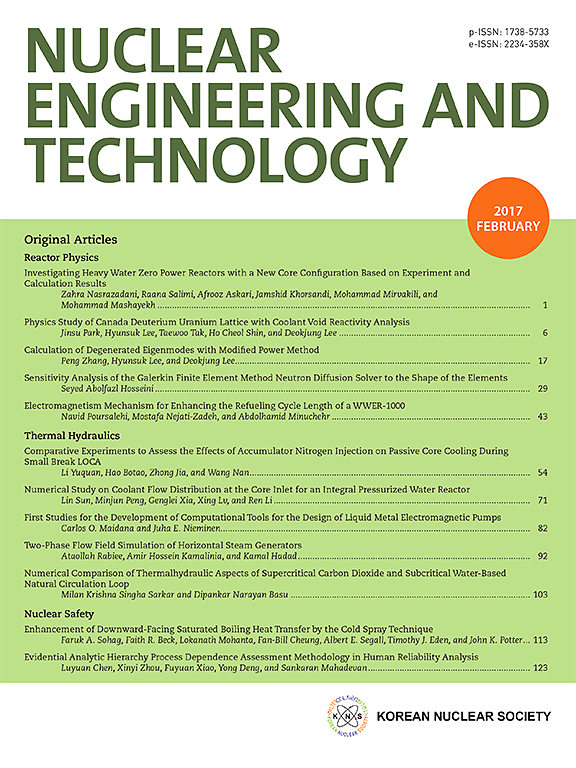Development of a force identification method using system-level measurements with component-level reduced-order modeling
IF 2.6
3区 工程技术
Q1 NUCLEAR SCIENCE & TECHNOLOGY
引用次数: 0
Abstract
The accurate estimation of excitation forces is essential for maintaining the structural integrity of dynamic systems. However, direct measurement of excitation forces is often infeasible in practical scenarios. To address this challenge, indirect measurement techniques have been the focus of significant research efforts. This study introduces a novel methodology for indirectly estimating excitation forces using the Component Mode Synthesis (CMS) technique. The proposed approach calculates excitation forces through equations of motion derived from a reduced-order model based on CMS. By utilizing system-level response data obtained from a minimal number of measurement points, this method achieves high prediction accuracy while substantially reducing computational demands. Validation of the proposed approach was performed through both Finite Element Method (FEM)-based simulations and experimental testing under various conditions. The results demonstrated the method’s robustness and accuracy, confirming its effectiveness in estimating excitation forces. This research provides a practical and efficient framework for force identification in dynamic systems, with broad potential for application across diverse industrial sectors.
求助全文
约1分钟内获得全文
求助全文
来源期刊

Nuclear Engineering and Technology
工程技术-核科学技术
CiteScore
4.80
自引率
7.40%
发文量
431
审稿时长
3.5 months
期刊介绍:
Nuclear Engineering and Technology (NET), an international journal of the Korean Nuclear Society (KNS), publishes peer-reviewed papers on original research, ideas and developments in all areas of the field of nuclear science and technology. NET bimonthly publishes original articles, reviews, and technical notes. The journal is listed in the Science Citation Index Expanded (SCIE) of Thomson Reuters.
NET covers all fields for peaceful utilization of nuclear energy and radiation as follows:
1) Reactor Physics
2) Thermal Hydraulics
3) Nuclear Safety
4) Nuclear I&C
5) Nuclear Physics, Fusion, and Laser Technology
6) Nuclear Fuel Cycle and Radioactive Waste Management
7) Nuclear Fuel and Reactor Materials
8) Radiation Application
9) Radiation Protection
10) Nuclear Structural Analysis and Plant Management & Maintenance
11) Nuclear Policy, Economics, and Human Resource Development
 求助内容:
求助内容: 应助结果提醒方式:
应助结果提醒方式:


